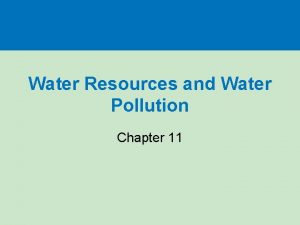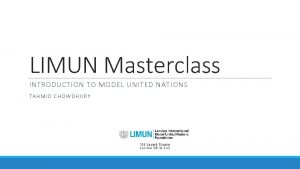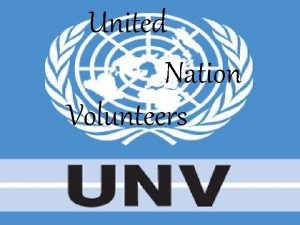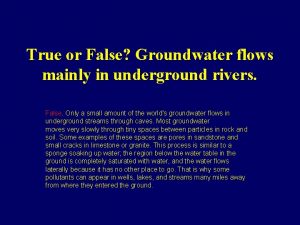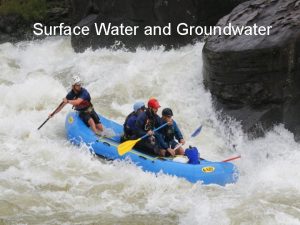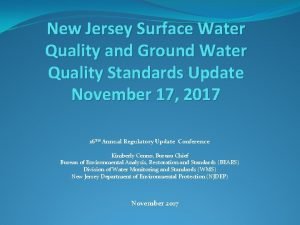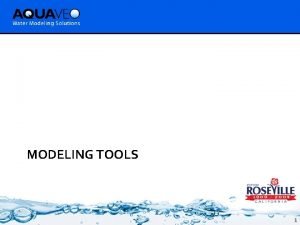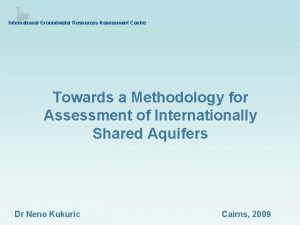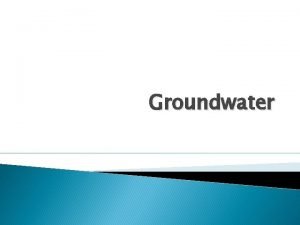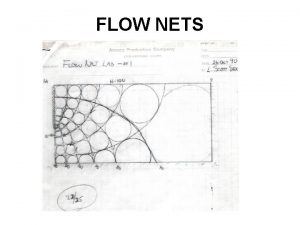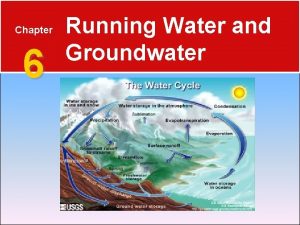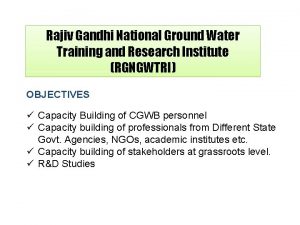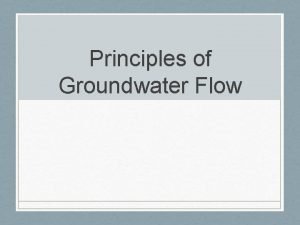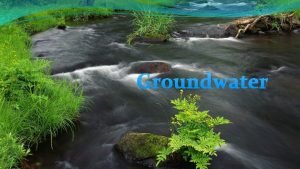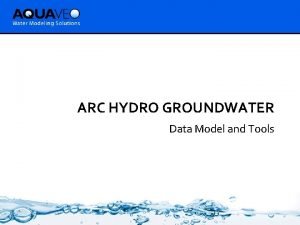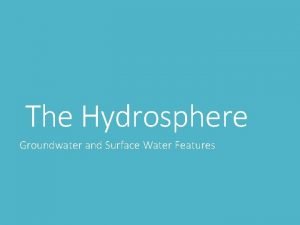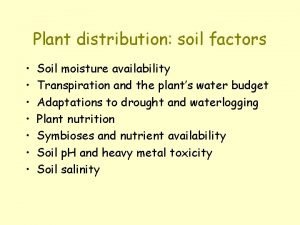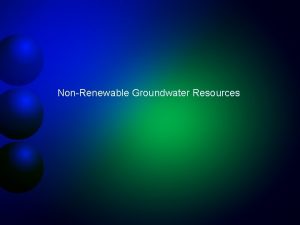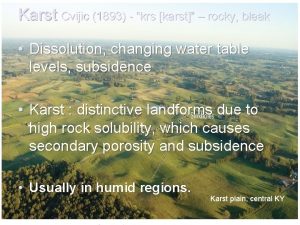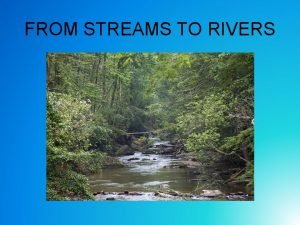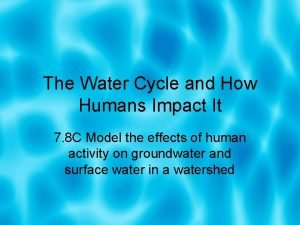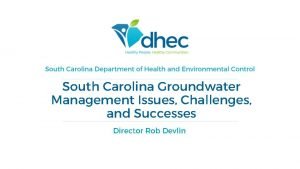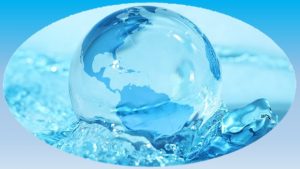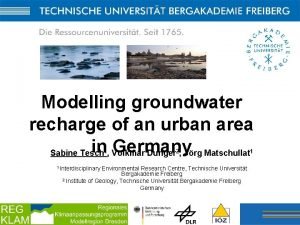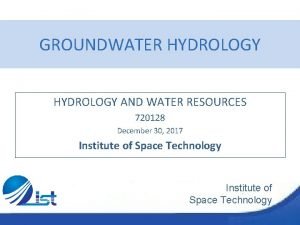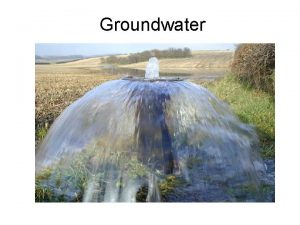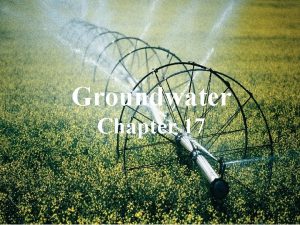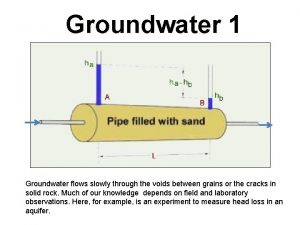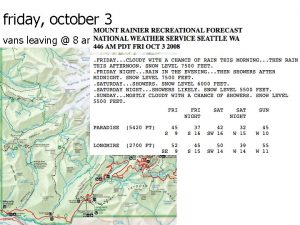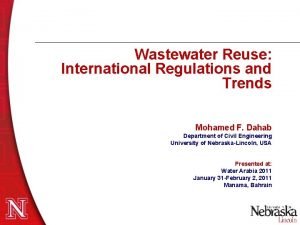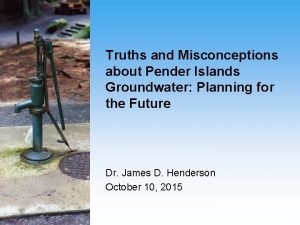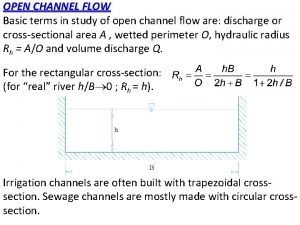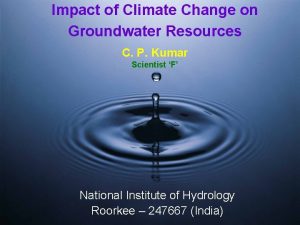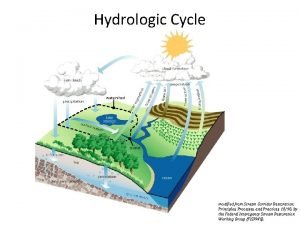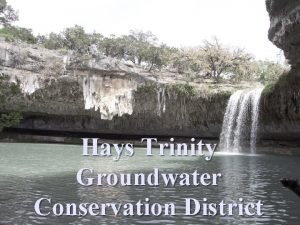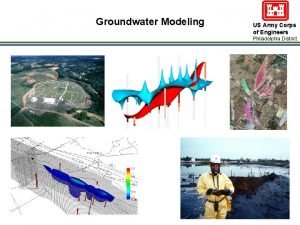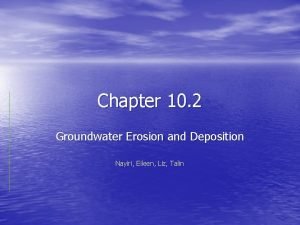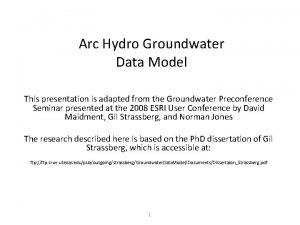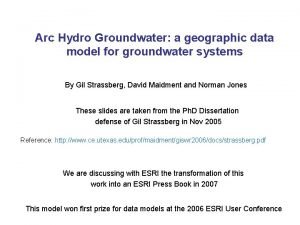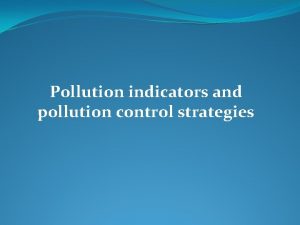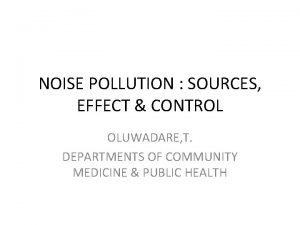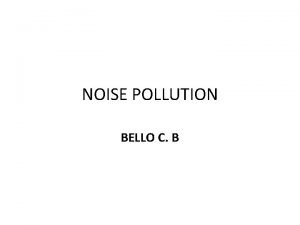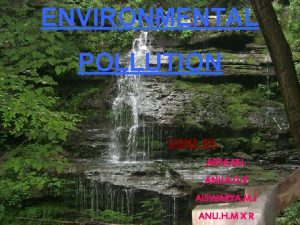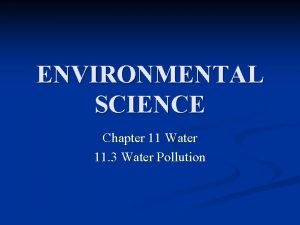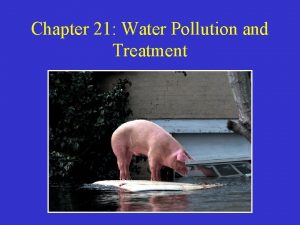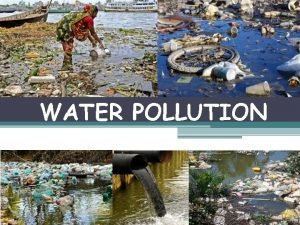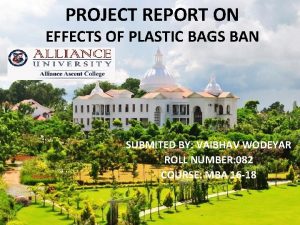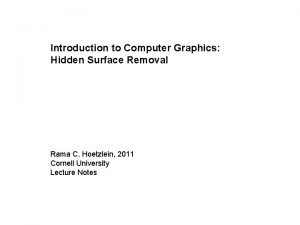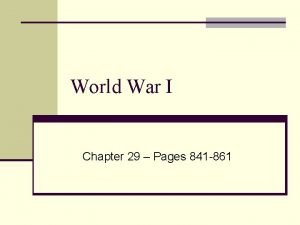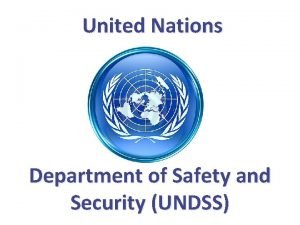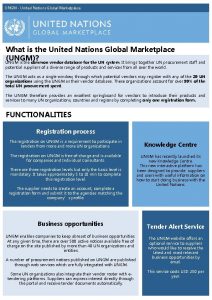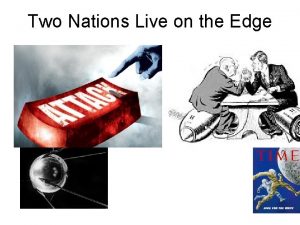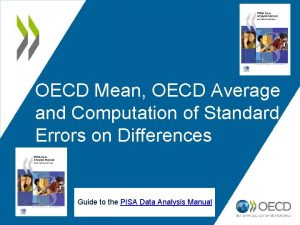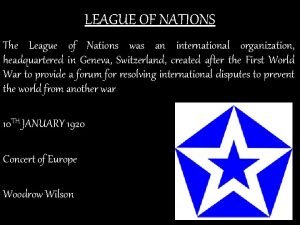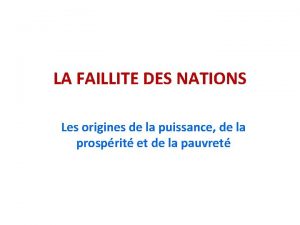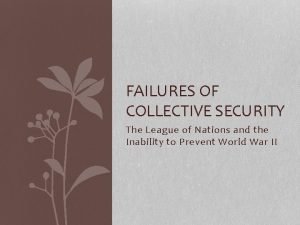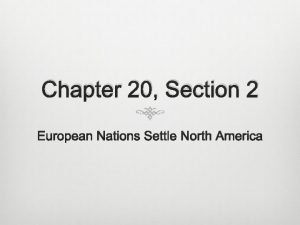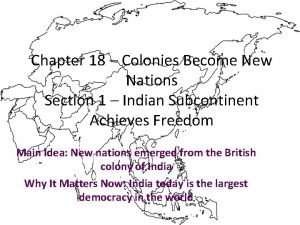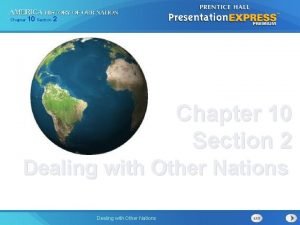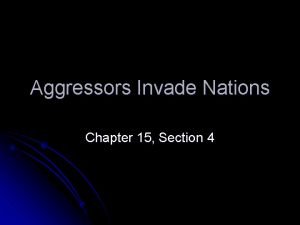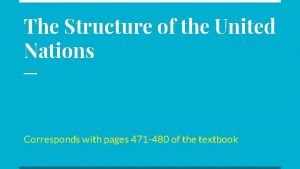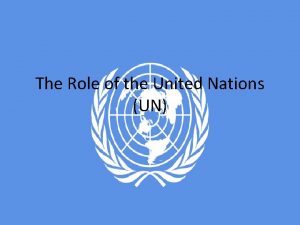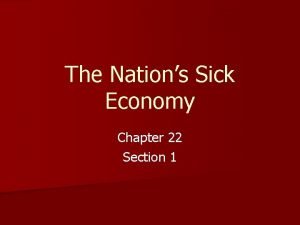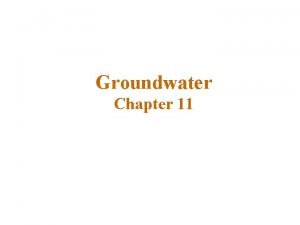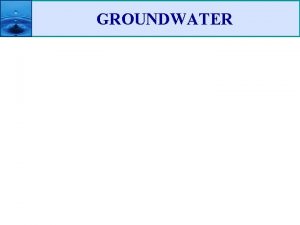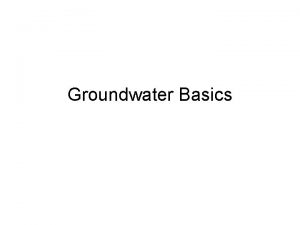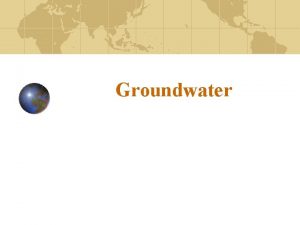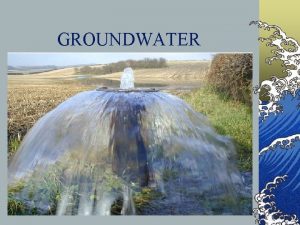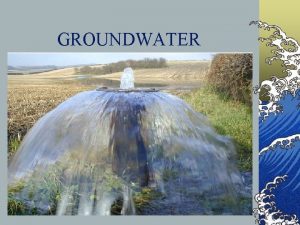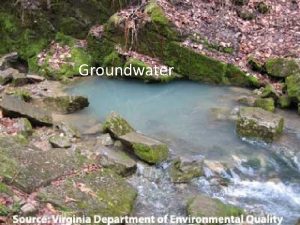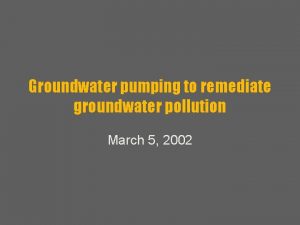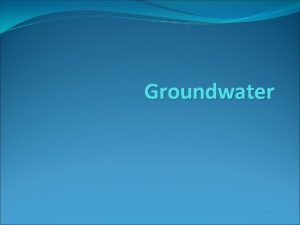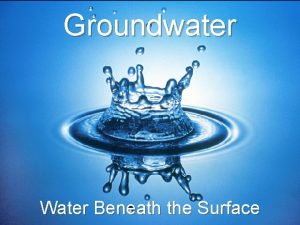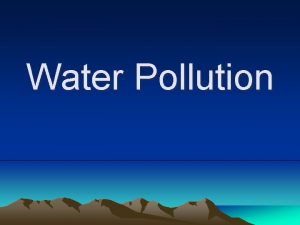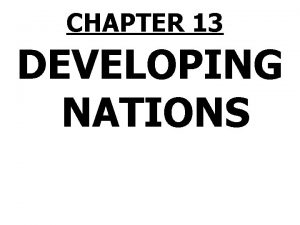Surface Groundwater Pollution In Developing Nations Introduction Surface























































































![Estimated illiteracy rate in 2000 (male and female, age 15) in percentage. [Figure source]: Estimated illiteracy rate in 2000 (male and female, age 15) in percentage. [Figure source]:](https://slidetodoc.com/presentation_image_h2/7912d20995ed5fd5657597fe6b1ad3e4/image-88.jpg)


- Slides: 90

Surface & Groundwater Pollution In Developing Nations

Introduction Surface & Groundwater

The Hydrologic Cycle • Water Basics – Sea water – Fresh Water 97. 2% 2. 8% • Polar ice & glaciers 2. 15% • Groundwater 0. 62% • Lakes and Rivers 0. 01%

The Hydrologic Cycle • The Three Fates of Precipitation – Infiltration • The movement of water into rocks or soil through cracks and pore spaces – Runoff • Water that flows over the land – Transpiration/Evapotranspiration • the release of water vapor to the atmosphere by plants


The Hydrologic Cycle • Infiltration capacity of the soil is controlled by: – Intensity and duration of rainfall – Soil saturation – Soil texture – Slope of the land – Nature of the vegetative cover

Main Sources of Water • Surface Water – Lakes, rivers, reservoirs • Ground Water – In the Earth, flows through fractures and pores

Surface Water – Stream Valleys • Flood Plains – Periodic floods deposit rich soils • Agricultural production on floods plains is followed by urbanization – Natural levees • Forms as floods deposit coarse detritus near the river • Naturally constraint the river except in the larger floods

Surface Water – Flooding • Floods and flood control – Floods are the most common geologic hazard – Causes of floods • Weather • Human interference with the stream system

Surface Water – Flooding • Floods and flood control – Engineering efforts • Artificial levees • Flood-control dams • Channelization – Nonstructural approach through sound floodplain management

What is Groundwater? • Water found in the pores and fractures of soil and bedrock • Largest reservoir of fresh water • Tends to be less polluted than surface water

What is Groundwater? • An important erosional agent – Groundwater is often mildly acidic – Contains weak carbonic acid – Forms caverns at or just below the zone of saturation – Karst topography on the surface

Groundwater Terminology

Groundwater Movement & Storage • Factors – Porosity • Percentage of total volume of rock or sediment that consists of pore spaces – Determines how much groundwater can be stored – Variations can be considerable over short distances – Permeability • The ability of a material to transmit a fluid

Groundwater Movement & Storage • Factors (continued) – Specific retention • The portion whish is retained as a film on particles, rock surfaces, and pore spaces – Specific yield • The portion which will drain under gravity – In general, • Porosity = Specific retention + Specific yield


Groundwater Movement & Storage • Factors (continued) – Aquifer - A zone of Earth material capable of supplying groundwater at a useful rate from a well

Groundwater Movement & Storage • Factors (continued) – Aquitard - A zone of Earth material that holds water but cannot transmit it fast enough to pump from a well

Getting Groundwater Out of the Ground • Extraction Methods – “Natural” Methods • Springs, Hot Springs, & Geysers

Getting Groundwater Out of the Ground • Extraction Methods (continued) – Man-made Methods • Wells

Getting Groundwater Out of the Ground • Problems with groundwater removal – Non-renewable resource – Subsidence – Contamination

Sources of Contamination • Natural Sources – Biologic activity / organisms – Naturally occurring elements • Human Caused – Acid Rain – Agricultural / Industrial Run-off

Sources of Contamination • Natural Sources – Bacteria and viruses – Uranium, radium, arsenic, and fluoride – Often naturally occurring in rock formations

Sources of Contamination • Human Caused – Acid Rain • Acid rain is caused by: – CO 2 from cars and power plants – NOx from cars – SO 2 from power plants

Sources of Contamination • Human Caused – Agricultural / Industrial Run-off • Leakage from waste disposal, treatment, or storage sites. • Discharges from factories, industrial sites, or sewage treatment facilities. • Leaching from pesticides and fertilizers on yards or fields.

Sources of Contamination • Human Caused – Agricultural / Industrial Run-off • Accidental chemical spills. • Leakage from underground storage tanks. • Improper disposal of household wastes such as cleaning fluids, paint, and motor oil.

Population and Water Resources

Population & Water Resources • Urban population – The average size of the world's 100 largest cities – ~0. 2 million in 1800 – ~0. 7 million in 1900 – ~6. 2 million in 2000. Source: UNESCO

Population & Water Resources Proportion of the population living in urban settlements: More developed regions: 70. 0% in 1975 75. 5% in 2000 78. 5% in 2015 Less developed regions: 27. 0% in 1975 40. 5% in 2000 48. 5% in 2015 Source: UNESCO

Urban water supply and sanitation • Proportion of households in major cities connected to piped water: – World: 94% – Africa: 43% – Asia: 77% – Europe: 92% – Latin America / Caribbean: 77% – North America: 100% – Oceania: 73% Source: UNESCO

Urban water supply and sanitation • Proportion of households in major cities connected to sewers: – World: 86% – Africa: 18% – Asia: 45% – Europe: 92% – Latin America / Caribbean: 35% – North America: 96% – Oceania: 15% Source: UNESCO

Urban water supply and sanitation • Urban child mortality – In the urban areas of low-income countries, 1 child in 6 dies before the age of five. – In areas poorly served with water and sanitation, the child mortality rate is multiplied by 10 or 20 compared to areas with adequate water and sanitation services. Source: UNESCO

Urban water supply and sanitation • Toilets and latrines – Infectious diseases transmitted by human excreta: • • • cholera, typhoid, infectious hepatitis, polio, cryptosporidiosis, and ascariasis Source: Worldwaterday. org

Urban water supply and sanitation • Toilets and latrines – Uganda Ministry of Health study • • 1995 – One toilet for every 328 students 2001 – One toilet for every 700 students Attributed to increased enrollment in schools 33% of 8000 schools had separate latrines for girls Source: Worldwaterday. org

Urban water supply and sanitation • Toilets and latrines – Prevention / control • Low population density areas – On-site systems such as ventilated improved pit (VIP) latrines, double vault composting latrines, pourflush toilets, and septic tanks. Desludging latrine pits in slum areas is not easy. This specially designed 'Vacutug' is doing good work in Kibera, Nairobi (Picture: IRC/Madeleen Wegelin ) Source: Worldwaterday. org

Urban water supply and sanitation • Toilets and latrines – Prevention / control • High population density areas – – Off-site sewage treatment plants Sewer systems Requires adequate infrastructure Low-tech waste stabilization ponds also a low-cost option Source: Worldwaterday. org

Water and health • Diarrheal diseases – 6, 000 deaths per day • mostly among children under five. – How to prevent? • WASH YOUR HANDS! Some children wash their hands in a bucket, demonstrating safe hygiene. Source UNICEF wwap@unesco. org Source: UNESCO

Water and health • Malaria – Over 1 million people die from malaria every year. – About 90 percent of the annual global rate of deaths from malaria occur in Africa south of the Sahara. – How to prevent? • Sleep under mosquito nets Source: UNESCO

Water and health • Schistosomiasis (worms) – More than 200 million people worldwide are infected by schistosomiasis. – 88 million children under fifteen years are infected each year with schistosomes. – 80 percent of transmission takes place in Africa south of the Sahara. Source: UNESCO

Water pollutants from industry • Some 300 -500 million tons of heavy metals, solvents, toxic sludge, and other wastes accumulate each year from industry. • In developing countries, 70% of industrial wastes are dumped untreated into waters where they pollute the usable water supply. Source: UNESCO

Pressures on freshwater ecosystems • Main threats to ecosystems from human activities – Population and consumption growth. – Infrastructure development – Land conversion – Overharvesting and overexploitation – Release of pollutants – Introduction of exotic species Source: UNESCO

Pressures on freshwater ecosystems • River pollution – Every day, 2 million tons of human waste are disposed of in water courses. – 40% of water bodies assessed in 1998 in the United States were not deemed fit for World distribution of hydropower recreational use due to nutrient, metal and agricultural pollution. Source: UNESCO

Pressures on freshwater ecosystems • River pollution – 5 out of 55 rivers in Europe are considered pristine – In Asia, all rivers running through cities are badly polluted. Source: UNESCO

Pressures on freshwater ecosystems • Wetlands loss: – 50% of the world's wetlands have been lost since 1900. – More than 80% of the wetlands along the Danube River have been destroyed since the start of the 20 th century. – The Mesopotamian Marshlands in the Tigris and Euphrates river basins were devastated by damming and river channelization. Source: UNESCO

Pressures on freshwater ecosystems • Biodiversity loss: – Between 34 and 80 fish species have become extinct since the late 19 th century, 6 since 1970. – At a global level, around 24% of mammals and 12% of birds are classified as threatened. – In the United States, 120 of 822 freshwater fish species are considered threatened, representing 15% of total fish species. Source: UNESCO

Sharing Water Resources • Conflict and cooperation – There have been 1, 831 interactions (both conflictual and cooperative) over the last fifty years. – The concept of 'virtual water' has been developed which allows nations and states to share the products and benefits. Source: UNESCO

Case Studies 1. Gujarat, India 2. Bangkok, Thailand 3. Aral Sea

Gujarat, India • Physiography – Salt deserts in Kachchh – Wet & fertile in SE • 2/3 of population engaged in agriculture

Gujarat, India • Water Sources: – Three perennial rivers flowing through South Gujarat – One major non-perennial river flowing in the central NW portion of the state – Rainfall is erratic

Gujarat, India • Area is susceptible to drought • Exacerbated by: – rocky terrain, – desert region, – a 1600 Km long coastline – and deteriorating ground water quality.

Gujarat, India • The problem: Over extraction of groundwater • The Result? Up to 40 meters drop in water table – Drops ~3 – 5 meters/year

Gujarat, India • The problem: Over extraction of groundwater – ~14, 000 villages out of 18, 500 villages suffer from severe water scarcity every year. – Poor can only afford “dug” wells – 10 m depth max – 15 Districts ( more than 2000 villages) are affected by fluoride, and 16 districts are affected by salinity.

Gujarat, India • Gujarat Infrastructure Development Board – Plans on utilizing groundwater as main water source – Diversion of water in the South and Central regions to the North

Gujarat, India • Gujarat Infrastructure Development Board – Construction of • • check dams, percolation tanks, village tanks, river beds etc. for the recharge of ground water. – Recycling and re-utilization of sewerage water in big cities and towns

Gujarat, India • Will this work? • What about groundwater contamination?

Bangkok, Thailand • Physiography: – Hilly to mountainous – Low-lying delta region • • Water sources – Lots of rain – Lots of rivers

Bangkok, Thailand • The problem: Over extraction of groundwater • The result? Land subsidence in Bangkok – Up to 10 cm/year (now 1 – 2 cm /year) – Due to government’s lack of planning

Bangkok, Thailand • Problems due to land subsidence: – changes in elevation and slope of streams, canals, and drains – damage to bridges, road, railroad, storm drains, sanitary sewers, canals, and levees – damage to private and public buildings

Bangkok, Thailand • Problems due to land subsidence: – in some southern coastal areas, subsidence has resulted in tides moving into low-lying areas that were previously above high-tide levels; – cost of pumping storm water and sewage out to Chao Phraya river and Gulf of Thailand.

Bangkok, Thailand • Government solution: – Expansion of water works service to cover the area – A pricing system to discourage excess groundwater use – Groundwater recharging – Public information on water saving.

Bangkok, Thailand • Will this work?

Aral Sea Basin • Once a large Pleistocene salt water lake (4 th largest) • Located between Kazakhstan to the north and Uzbekistan in the south • Desert-continental climate – Extreme temperatures, cold winters, hot summers, and sparse rainfall • Precipitation rate = evaporation rate

Aral Sea Basin • Natural factors affecting the lake – Inflow from rivers (4/5 th of total inflow – Increasing evaporation rates / decreasing rainfall

Aral Sea Basin • The problem: – Diversion of water for agricultural irrigation • The result? – Increased salinity – Decreased volume

Shrinkage of the Aral Sea, 1960 – 99 Adapted from Philip Micklin, Western Michigan University Aral Sea. Encyclopædia Britannica. Retrieved August 4, 2004, from Encyclopædia Britannica Premium Service. <http: //www. britannica. com/eb/article? eu=9293>

Development of ecological crisis in the basin of the Aral Sea Units of measurement 1966 1976 1996 2000 Territory of "new" salty desert appeared as a result of the sea drying off. sq. km. No 130200 38000 42000 Physical mass of salt, dust and wastes within salty desert mln ton. No 500 2300 3300 Territory of salt and dust spread thousand sq. km No 100 -150 250300 400450 Growth of withdrawal and fall out of salts and dust kg/hect No 100 -200 500700 7001100 Population in the zone of ecological crisis thousand people No 500 -600 300035007000 Source: State of Environment of the Aral Sea Basin

Source: State of Environment of the Aral Sea Basin

Aral Sea Basin • Impact on Climate – Used to regulate cold winds from Siberia & moderate summer heat – Now short, dry summers and long, cold winters – Frequent dust storms Sources: State of Environment of the Aral Sea Basin , Britannica. com

Aral Sea Basin • Impact on Soils – Desertification – Loss of topsoil – Dust storms transport pesticide-laden soil to Arctic regions – Farming without irrigation impossible Source: State of Environment of the Aral Sea Basin

Aral Sea Basin • Impact on cryosphere – Deposition of dust and mineral-rich precipitation = glacial melting – Glaciers lost • 1081 in the Pamir-Altay area • 71 glaciers in the Zaili Alatau area Source: State of Environment of the Aral Sea Basin

Aral Sea Basin • Impact on cryosphere – Loss of fresh water supply – Loss of main atmospheric moisture condensators of the region. Source: State of Environment of the Aral Sea Basin

Aral Sea Basin • Impact on inhabitation sphere – People moving elsewhere due to pollution, lack of drinking water, and loss of soil – Pollutants include: • • oil hydrocarbons, phenols, heavy metals and minerals, and pesticides. Source: State of Environment of the Aral Sea Basin

Aral Sea Basin • Impact on inhabitation sphere – destruction of fishery, – the appearance of cancerogenic diseases, – and changes in citogenetic indices Source: State of Environment of the Aral Sea Basin

Aral Sea Population Density Source: State of Environme nt of the Aral Sea Basin

Aral Sea Basin • Impact on biodiversity – Historically: • • 500 kinds of birds, 200 species of mammals 100 species of fishes, thousands of insects and invertebrates. Sources: State of Environment of the Aral Sea Basin , Britannica. com

Aral Sea Basin • Impact on biodiversity – Pre-1960: 70 kinds of mammals and 319 types of birds – Today: 32 kinds of mammals and 160 types of birds remain – Fishing industry destroyed A former harbor in the city of Aral, Kazakhstan Sources: State of Environment of the Aral Sea Basin , Britannica. com, Wikipedia, the free encyclopedia

Aral Sea Basin • Impact on the social and economic spheres – Region has the highest infant mortality rate in the former USSR – High level of maternity death – Increase in TB, infections and parasites, typhus, hepatitis, paratyphoid – Loss of jobs, etc. Source: State of Environment of the Aral Sea Basin

Aral Sea Basin • Other problems – Part of the area was a Soviet WMD testing site • Tularemia • Bubonic plague • Anthrax (live spores as of 1999) Sources: Britannica. com

Aral Sea Basin • What is being done? – Governments have tried to institute waterconservation policies & encourage use of less water intensive agriculture – Region not stable, hard to implement Sources: Britannica. com

Aral Sea Basin • Possible Solutions to Problems – Improving the quality of irrigation canals; – Installing desalination plants; – Charging farmers to use the water from the rivers; – Using different cotton species, which use less water; – Melting glaciers in Siberia, and moving the water to refill the Aral. – Using fewer chemicals on the cotton Source: Wikipedia, the free encyclopedia

Aral Sea Basin • In 1994 Aral Sea Basin Program (ASBP), with the assistance of UNEP and the World Bank, was launched. • The main objectives of the ASBP are: – stabilize the environment of the Aral Sea Basin; – rehabilitate and disaster area around the sea; – improve management of land water resources in the basin – build capacity of institutions at all levels to plan and implement these programs Source: State of Environment of the Aral Sea Basin

Aral Sea Basin • Will the Aral Sea be saved? • Should it be saved?

Water Education

Water Education • Educating the public is key to insuring good water quality & supply • Problem: – Politics – Literacy rates – Prejudices Source: UNESCO

Water Education • Primary school – Today, 79% of the world's children aged 6 to 11 are enrolled in primary school. – 60% of these are girls. – 4 out of 10 primary-age children in sub-Saharan Africa do not attend school. Source: UNESCO

Regional distribution of primary-age children not enrolled 1998 -2000. Global total - 114 million in 2000. [Figure source]: The Millennium Development Goals: Progress, Reversals and Challenges. UNDP, 2000.

Gross enrolment ratio at primary level in 1997 (male/female) Gross enrolment ratio at secondary level in 1997 (male/female) Gross enrolment ratio at tertiary level in 1997 (male/female) [Figure source]: UNICEF, 2002. The State of the world's Children 2002.
![Estimated illiteracy rate in 2000 male and female age 15 in percentage Figure source Estimated illiteracy rate in 2000 (male and female, age 15) in percentage. [Figure source]:](https://slidetodoc.com/presentation_image_h2/7912d20995ed5fd5657597fe6b1ad3e4/image-88.jpg)
Estimated illiteracy rate in 2000 (male and female, age 15) in percentage. [Figure source]: UNICEF, 2002. The State of the world's Children 2002.

Water Education • Will it work?

~ End ~
 Ground water pollution
Ground water pollution Groundwater pollution
Groundwater pollution Introduction to model united nations
Introduction to model united nations Introduction of united nations
Introduction of united nations Groundwater true/false quiz answers
Groundwater true/false quiz answers Running water and groundwater
Running water and groundwater Nj groundwater quality standards
Nj groundwater quality standards Gms groundwater
Gms groundwater Groundwater assessment methodology
Groundwater assessment methodology Water table
Water table Septic tank contamination groundwater
Septic tank contamination groundwater Groundwater flow net
Groundwater flow net Explain how water erosion by groundwater can form a cave.
Explain how water erosion by groundwater can form a cave. Chapter 6 running water and groundwater
Chapter 6 running water and groundwater Brainpop water cycle
Brainpop water cycle Rajiv gandhi groundwater raipur
Rajiv gandhi groundwater raipur Total hydraulic head
Total hydraulic head Permeability in rocks
Permeability in rocks Arc hydro groundwater
Arc hydro groundwater On the surface of water
On the surface of water Lenticels
Lenticels Is groundwater a renewable or nonrenewable resource
Is groundwater a renewable or nonrenewable resource Groundwater table
Groundwater table How does groundwater rejoin the water cycle
How does groundwater rejoin the water cycle Human impact on groundwater
Human impact on groundwater Groundwater
Groundwater Cut bank geography
Cut bank geography Groundwater system
Groundwater system Groundwater recharge
Groundwater recharge Groundwater hydrology
Groundwater hydrology Uses of ground water
Uses of ground water Importance of groundwater
Importance of groundwater Groundwater
Groundwater Base level river
Base level river Groundwater recharge pdf
Groundwater recharge pdf Groundwater
Groundwater Groundwater flow definition
Groundwater flow definition Piezometer groundwater
Piezometer groundwater Groundwater mining
Groundwater mining Water budget equation
Water budget equation Hays trinity groundwater conservation district
Hays trinity groundwater conservation district Us army corps of engineers philadelphia district
Us army corps of engineers philadelphia district Groundwater information network
Groundwater information network Groundwater erosion and deposition
Groundwater erosion and deposition Arc hydro groundwater
Arc hydro groundwater Arc hydro groundwater
Arc hydro groundwater Pollution introduction
Pollution introduction Introduction to pollution
Introduction to pollution Noise pollution introduction
Noise pollution introduction Noise pollution introduction
Noise pollution introduction Introduction of pollution
Introduction of pollution Introduction to pollution
Introduction to pollution Water pollution introduction
Water pollution introduction Introduction of water pollution
Introduction of water pollution Section 3 water pollution
Section 3 water pollution Water pollution introduction
Water pollution introduction Impact of use of plastic bags on environment methodology
Impact of use of plastic bags on environment methodology Total surface area of triangular prism formula
Total surface area of triangular prism formula High surface tension vs low surface tension
High surface tension vs low surface tension Volume and surface area of cone
Volume and surface area of cone Hidden surface removal adalah
Hidden surface removal adalah Which three nations belonged to the triple entente
Which three nations belonged to the triple entente United nations
United nations Undss usg
Undss usg What is ungm
What is ungm Time cover
Time cover Gap in the bridge political cartoon
Gap in the bridge political cartoon Moral hazard cartoon
Moral hazard cartoon Europe map
Europe map The colonies become new nations
The colonies become new nations Panama residency friendly nations
Panama residency friendly nations Abraham father of many nations
Abraham father of many nations Oecd nations meaning
Oecd nations meaning League of nations structure
League of nations structure League of nations failure
League of nations failure La faillite des nations
La faillite des nations Why did the league of nations fail
Why did the league of nations fail The failure of the league of nations
The failure of the league of nations British isles and nordic nations quiz
British isles and nordic nations quiz European nations settle north america
European nations settle north america Why have some nations begun a transition to free enterprise
Why have some nations begun a transition to free enterprise New nations emerge section 3 quiz
New nations emerge section 3 quiz The indian subcontinent achieves freedom
The indian subcontinent achieves freedom Section 2 dealing with other nations
Section 2 dealing with other nations Chapter 15 section 4 aggressors on the march
Chapter 15 section 4 aggressors on the march Chapter 31 section 4 aggressors invade nations
Chapter 31 section 4 aggressors invade nations Chapter 15 section 4 aggressors invade nations
Chapter 15 section 4 aggressors invade nations David low cartoons league of nations
David low cartoons league of nations Six main organs of the united nations
Six main organs of the united nations What is the role of the united nations?
What is the role of the united nations? Chapter 22 section 1 the nation's sick economy
Chapter 22 section 1 the nation's sick economy

